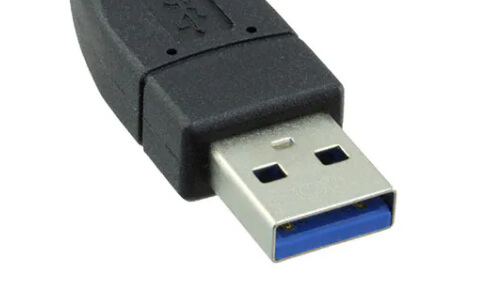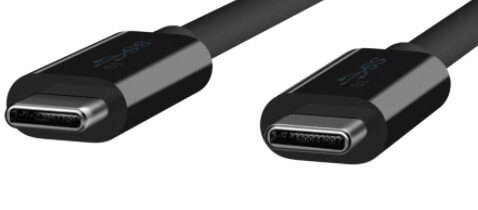No one likes slowdowns and delays when downloading large files—especially on a deadline. Like a video editor who needs to download a batch of footage for a last-minute project.
Here’s some advice that’s sure to save significant time the next time you download large files: don’t download to an external hard drive.
I know, I know. You don’t have much space on your local disk. None of us do. We get it.
But here’s the thing: external drives and their connections are one of the most common causes of download speed bottlenecks and slowdowns. An external drive-induced performance drop-off can occur at several stops along the data transfer pathway, including:
- The disk drive itself;
- The connection port on your computer; or
- Any dongles connected to those ports which end up splitting your port bandwidth (Macbook users, we’re looking in your direction).
Downloads are only as fast as your slowest bottleneck, after all. It doesn’t matter if everything else is blazing fast: If you’ve got a bottleneck, your download will be slow.
In an ideal world, downloading files to your local drive is always your fastest option. It requires far fewer input/output (I/O) operations to move data than an external peripheral.
But life isn’t always ideal. Sometimes we absolutely have to download large files to an external drive. If that’s the case, here’s what to do for the best performance.
Check your internet speed (and try the WiFi)
Before doing anything else, we recommend running a quick internet speed test on your upload and download speeds.
Running a test takes just a few seconds. You may be surprised to learn your actual download speed isn’t quite as fast as you thought (or you were told by your ISP).
Also—if you’re running ethernet, try the Wi-Fi.
We suggest a quick download test (using a small-ish file) to compare ethernet performance with that of your W-Fi. Newer Wi-Fi standards are faster than legacy 100BASE-TX ethernet, which tops out at 100 Mbps and can limit you either via your ethernet port or network router.
If any of this testing shows you can only download at 100 Mbps or something similarly languid—well, you’ve found your bottleneck.
Need to Send or Receive Large Files?
Check your external hard drive
If internet speeds are solid and you absolutely must use an external hard drive to download large files, you can optimize your drive setup for the fastest possible download speeds.
In terms of the actual drive itself, you should:
1. Use a solid-state drive (SSD).
SSDs are super fast and write data at speeds that keep up with most file transfer interactions. Generally, if you’re using an SSD, the drive itself is probably not your bottleneck. Mechanical spinning drives that read or write at 7200 or 5400 RPM, on the other hand, definitely could be. Especially older drives that may need disk cleanup or defragmentation (we recommend just buying a new drive).
2. Use the fastest external drive you can.
This one’s pretty obvious, right? Here’s a list of some of the fastest external hard drives on the market. If you’re a video professional, you’ll like to read the top 5 external hard drives for video pros.
3. Use a drive that’s native to your computer.
MacBook Pro users should use an Apple drive, for example. Doing so avoids slowdowns from any potential hardware or software conflicts.
For best results, make sure the drive is connected to your computer’s fastest port. Speaking of ports, your bottleneck could also be the type of port connecting the hard drive to your computer.
Check USB and other connections
While newer Thunderbolt and Universal Serial Bus (USB) connections are more than able to keep up with the fastest large file transfers, other common ports—such as USB 2.0—just don’t have the bandwidth.
Here’s a breakdown of the speed limitations of the most popular connection ports:
| Port | Speed |
| Thunderbolt 3 & 4 | 40 Gbps |
| Thunderbolt 2 | 20 Gbps |
| USB 4 | 40 Gbps |
| USB 3.1 (SuperSpeed) | 10 Gbps |
| USB 3.0 (SuperSpeed) | 5 Gbps |
| USB 2.0 (Hi-Speed) | 480 Mbps |
| USB 1.1 (Full-Speed) | 12 Mbps |
| USB 1.0 (Low-Speed) | 1.5 Mbps |
As the table shows, any equipment using USB 2.0 ports or below are going to have serious issues keeping up. Good news is, it’s highly unlikely you’ll have anything below USB 2.0, unless your equipment is fairly out of date.
Read More: iPhone 13 ProRes – Can Apple Download Large Files with a Lightning Cable?
But this all begs the question: how do you know which USB connector you’ve got?
It’s actually pretty simple, because their receptacles are different. USB-A standard receptacles are color coded on the inside: USB 1 and 2 connections are typically either white or black, while USB 3 connectors are blue (and sometimes include an “SS” marking for “SuperSpeed” beside the port).
Mac users can also follow these instructions to confirm their port types.

A USB 3.0 connector.
USB 4 and Thunderbolt connectors, meanwhile, use a USB-C connector system.

A USB-C connector.
Always check your ports and connectors if you experience slowdowns. it could be that a quick tweak is all you need to speed things up.
Try not to use a dongle (if you can help it)
Even if you’re downloading to the fastest possible hard drive and connected to the fastest possible port, you’ll still likely face a bottleneck if you’ve connected a dongle to that port.
We’ve got nothing against dongles—those connectors that consolidate many different ports into one or two ports plugged into your computer—in theory. They can be super handy. MacBook users don’t have many port options at all, for example, without a dongle.
But dongles are also common slowdown culprits, for a couple of reasons. First and most important, a dongle’s many ports—which can include ethernet, USB, Thunderbolt, and HDMI—dilute the bandwidth of the one or two ports on your computer to which the dongle is connected.
Dongles also create a longer, more complex data pathway that can slow things down:
files come down through the ethernet connection on the dongle > then into the computer > then back out through the dongle to the USB drive.
Bottom line: If you’re sharing any port with multiple devices, you’re splitting the speed of that port while considerably diminishing its performance.
Blow away file transfer bottlenecks with MASV
At MASV, we pride ourselves on offering the fastest large file transfer speeds on the market. Because MASV rides a dedicated global accelerated network of more than 150 geographically distributed servers, users can upload and download at up to 1 Gbps from most locations around the globe—even when transferring huge video files.
But it’s much harder to take advantage of all that speed without the right setup.
That’s why we always tell our customers to download large files to their local disk, if at all possible, instead of an external hard drive. The difference in speed is quite noticeable.
But if you absolutely must use an external disk for your large file downloads, follow the steps above. You can thank us later.
Need to Upload and Download Large Files
Get free transfer credits to use with the fastest, large file transfer service available today, MASV.